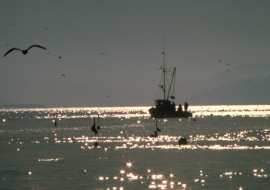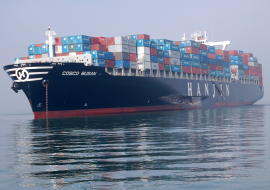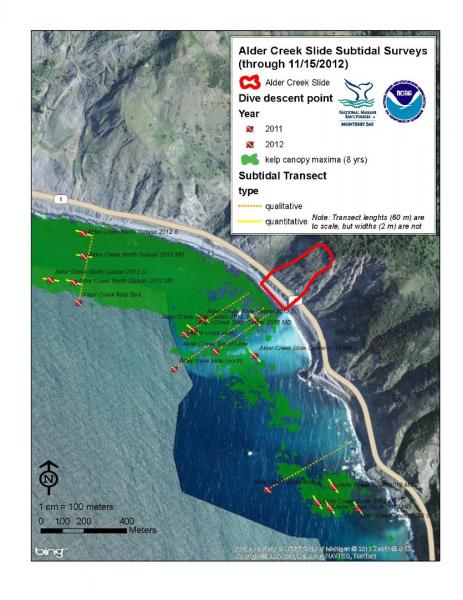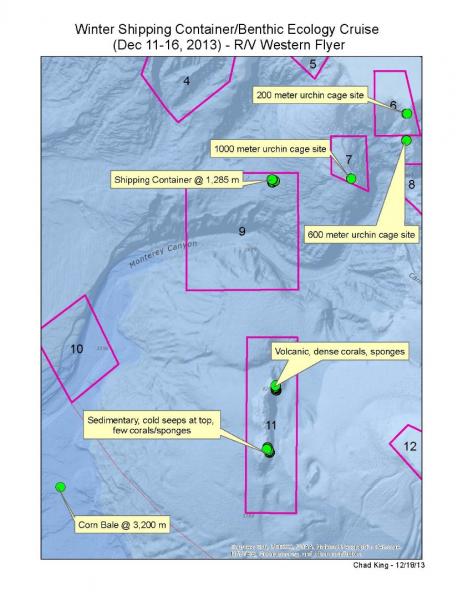Overview
A wide range of human-use activities occur in and around the waters of the Greater Farallones National Marine Sanctuary. The San Francisco Bay metropolitan area exerts considerable influence on the scale and intensity of the often competitive uses occurring in the area.
The major near- and offshore activities include commercial fishing and mariculture, commercial shipping, recreation and research. The sanctuary is a popular recreation area because of its many outstanding natural features and its proximity to population centers.
Commercial Fishing and Mariculture

The most important commercial harvests in the sanctuary include Pacific herring, Clupea pallasii, salmon, flatfishes, tuna and Dungeness crab, Cancer magister. Currently, the offshore commercial groundfish fishery within the Greater Farallones remains closed below 36 meters (118 feet).
Most of the commercial catches harvested in the sanctuary are landed in San Francisco, Bodega Bay, Oakland, Half Moon Bay and Sausalito. A number of mariculture operations in Tomales Bay and Drakes Estero raise oysters, mussels and other shellfish.
Commercial Shipping
Three major shipping lanes converge in the sanctuary just west of the Golden Gate Bridge at the entrance to San Francisco Bay. The volume of large vessel traffic in and out of San Francisco Bay is substantial, totaling 3,097 inbound vessels and 3,054 outbound vessels in 2004.
It is estimated that approximately 1,700 of these vessels carry oil as their primary cargo annually. In November of 2007, 58,000 gallons of oil was spilled by the container ship Cosco Busan. However, the potential exists for millions of gallons to be spilled from many large container vessels.

In recent years, the sanctuary is seeing an increase in cruise ship traffic. For example, cruise ship visitation to San Francisco Bay more than doubled in two years, from 44 in 2002 to 91 in 2004.
Recreation
More than fifty coastal access points in Sonoma, Marin, San Francisco and San Mateo Counties provide direct access and views of the sanctuary. Most of these access points are located in federal, state, county and local parks.
Sport fishing is one of the more popular activities in the sanctuary. King salmon, Oncorhynchus tshawytscha, and rockfishes are the major species taken. Whale watching, Farallon Island wildlife viewing, sailing and oceanic birding excursions account for several thousand visitors venturing offshore each year.
The major onshore recreational uses include beach-related activities, bird watching, coastal hiking, wildlife viewing, tidepooling, surfing, kayaking, canoeing, boardsailing, clamming and surf fishing. On some weekend days, more than 1,000 clam diggers harvest geoduck clams, Panopea abrupta, Pacific gaper clams, Tresus nuttallii, Horseneck gaper clams, Tresus capax , and littleneck clams, Protothaca staminea.
Monitoring
The diversity of physical and biological habitats throughout the sanctuary offers an outstanding opportunity for scientific research on marine and estuarine ecosystems. Several academic institutions, government agencies and nongovernmental organizations have ongoing monitoring and research programs in the area.
The sanctuary collaborates with these organizations on monitoring and research to help characterize the sanctuary’s wildlife and habitats and to help understand natural and human factors responsible for causing changes in the marine environment.
The following list includes some of the projects underway in the sanctuary. Please click on the Projects tab at the top of this page for more information.
Monitoring at the Farallon Islands
The majority of monitoring studies at the Farallon Islands are coordinated efforts between PRBO Conservation Science, a non-profit organization, and the United States Fish and Wildlife Service. These organizations are involved in several projects, including studying seal and sea lion abundance and reproduction as well as examining reproduction, feeding ecology and population dynamics in seabird species that breed on the islands. Other researchers study shark behavior, abundance, feeding and distribution around the Farallones and near Point Reyes Headlands.
The sanctuary is also involved in monitoring efforts on the Farallon Islands. Staff collect intertidal monitoring data, for example. Through regular assessment of the condition and health of this sensitive habitat, we can detect acute changes and long-term trends. Monitoring information can also indicate if a particular management action is effective.
Seabird Protection Network
This effort, spearheaded by the Greater Farallones National Marine Sanctuary and in cooperation with the U.S. Fish and Wildlife Service Common Murre Restoration Project and other agencies, sanctuaries and non-governmental organizations, is a program aimed at improving the survival and recruitment of central California coast seabird colonies. The program addresses one of the biggest obstacles to the recovery of these populations: human disturbances. The goal is to reduce human disturbances at seabird breeding and roosting sites along the California coast.
Beach Watch
This long-term beach monitoring program’s objective is to develop status and trend information on the sanctuary’s shoreline biological resources. Trained volunteers conduct surveys every two to four weeks. Surveyors document living and dead wildlife; restoration recovery; visitor-use patterns, wildlife disturbance and violations; chronic and catastrophic oil pollution; and detection of ecosystem changes such as El Niño and upwelling events. Since 1993, volunteers have regularly monitored sanctuary beaches documenting wildlife, oil spills and seasonal changes along the shore.
The Duxbury Reef Restoration Program
This sanctuary program analyzes visitor data, determines baseline species diversity patterns and abundance on the reef, and identifies high- and low-impact areas regarding visitor use.
Long-Term Monitoring Program and Experiential Training for Students (LiMPETS)
LiMPETS is a program for middle schools, high schools and other volunteer groups; it was developed to monitor rocky intertidal, sandy beach and offshore areas of the five West Coast national marine sanctuaries: Olympic Coast, Cordell Bank, Greater Farallones, Monterey Bay and Channel Islands.
The sanctuaries and their partners monitor the abundance and distribution of major intertidal biota, sand crabs and selected offshore species to increase awareness and stewardship of these ecosystems. Various data collection procedures include transects, random quadrat counts, total organism counts, sex determination and size measurements. Data are collected so that interested groups working with the sanctuaries’ education staff can follow long-term changes.
The Partnership for Interdisciplinary Studies of Coastal Oceans (PISCO)
PISCO is a collaboration of scientists from four universities (Oregon State, Stanford, UC Santa Barbara and UC Santa Cruz) that explores how individual organisms, populations and ecological communities vary over space and time.
PISCO has initiated a massive effort to monitor the rocky shores in and around the sanctuary. It is involved in a large-scale, long-term study of the patterns of species diversity in these habitats and the physical and ecological processes responsible for structuring these communities.
Photos
Maps
Alder Creek slide subtidal surveys (through 11/15/2012)

[View Larger]
Winter Shipping Container/Benthic Ecology Cruise (Dec 11-16, 2013) Study Sites

[View Larger]